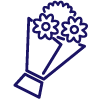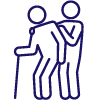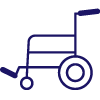- Yokohama-shi Top Page
- Izumi Ward Top Page
- Living and Procedures
- Citizen collaboration and learning
- Collaboration and support
- Izumi inhabitant of a ward activity support center
- Lecture and event information
- Report on the 2020 SDGs Lectures Beginning Today
Here's the text.
Report on the 2020 SDGs Lectures Beginning Today
What we can do for the future
Last Updated July 11, 2023
Outline of the event
Date and time
From 10:00 to 12:00 on Friday, December 4, 2020
[Venue]
Izumi public hall Auditorium, Yokohama
[Number of applicants]
44 (Number of participants on the day): 34 people)
Contents of the course
Part 1: The short film “Traveler who missed” (produced in 2019) showing the appeal of Yokohama, the future city of SDGs
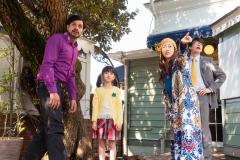
"The Traveler who missed it,"
"Traveler who missed" (produced in 2019)
Director: Kohatsu Yo
Appearance: Yuri Sakai Cibri Tomomi Itano Tamaki, Reo Toshie Negishi
A story in which a girl living in Yokohama helps a foreign tourist who missed a cruise ship in Yokohama with the help of the people around him, and solves local issues in the process.
It depicts "connection" based on the concept of Yokohama, the future city of SDGs, and "citizen power" which is also a hidden theme of this work.
After watching this short film produced by Yokohama City for about 17 minutes, I think you could feel closer to the theme of "No one is left behind" at the root of the SDGs and the power created by the wisdom and power of people.
Part 2 "SDGs Beginning Today" Lecture
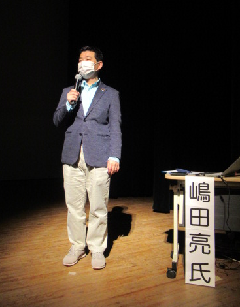
Mr. Ryo Shimada
Japan JC Certified SDGs Ambassador (sponsored by the Ministry of Foreign Affairs)
2030 SDGs card game Certified facilitator
Lecturer Ryo Shimada (Ryo Shimada)
We asked about the outline of the SDGs.
First half
While explaining each of the 17 goals set forth in the SDGs, what goals emerged in the short films screened in Part 1 corresponded to, and multiple goals were resolved at the same time by solving one problem. He told me specifically that he was led to a solution.
The fact that it was a short film created on the theme of SDGs alone became clear little by little, and I deepened my understanding of the 17 goals.
I learned while looking at the materials.
Next, we asked about an example of "from snacks to global warming" as a familiar problem around them.
In order to make snacks that companies offer in large quantities at low prices, they use a large amount of palm oil. In order to obtain a large amount of palm oil, the vast land made by burning the jungle into palm palm fields.
The loss of the jungle that turned carbon dioxide into oxygen causes global warming and changes the climate of the region. Then the grains grown in the area will no longer grow, and the family will lose their work and income. If you are in need of living, you will not be able to go to school because you will not be able to go to school and lose the opportunity to learn, and you will not be able to even receive school lunches, which were a source of nutrition.
Behind the distribution of snacks sold in large quantities at low prices, I realized that the numerical value of multiple SDGs goals has been reduced.
This does not apply only to snacks. What about the eco-bag promotion activity that started in July this year in Japan? On the other hand, what seems to be a good idea may be to create new challenges from a different perspective.
In this way, the problem solving was not a jigsaw puzzle type that was completed by combining them one by one, but it was easy to understand if it was regarded as a rubic cube type in which everything was linked.
In the first half of the course, I learned to think from a broad perspective to achieve the 17 goals of the SDGs.
I thought about what I could do.
The second half
The second half of the course began with the importance of establishing SDGs initiatives as a business in order to permeate society, and that many companies are already working on it.
People, goods, regions, and attitudes involved in the series of processes in which companies create and sell products. By purchasing goods, we may be making someone unhappy somewhere in the world or complimenting a chain that destroys the earth. From 100 steps per person, 100 steps per person. By changing the consciousness of individuals, we can change countries and companies. To do so, I realized that it is necessary for as many people as possible to know, learn, and take action on the SDGs.
On the stage, the poet Kathy Jetonil-Kiziner read a poem at the opening ceremony of the United Nations Climate Change Summit in 2014.
Kiziner, who lives on a beautiful small island in the Marshall Islands, speaks to her baby, his daughter. His mother pledged that his hometown island was in danger of submersion due to global warming, that the world did not face it seriously, and that his sleeping child had a strong determination to use all means to protect his hometown. And the reading was over.
Lastly, Mr. Shimada introduced the number of abuses and poverty currently placed by Japanese children, and asked, "What do you start for this future town for future children?" The lecture was concluded with the question.
Main voices of participants (from questionnaire after attendance)
Points that I understood or did not understand about the SDGs.
- To be a tool that expresses every challenge on earth. The goal is to derive solutions by sharing these tools around the world. I felt that it was necessary for each person to express their imagination through the SDGs what is behind things that are close to us.
- It was a word I often hear, but I was able to learn again. I don't know "something" yet, but I understood that each individual had to start "something".
- One of the issues of climate change is not just companies. I am also responsible for taking advantage of it. The big problem is that it can be changed with a little awareness. Mr. Kiziner's speech remained in my heart.
- I was able to understand the goals behind Japan in the SDGs and the status of initiatives by companies, etc., and realized that it was important for each and every one to act first.
- The 17 goals are interconnected, not simply saying that if a single goal is achieved, it is OK. It is necessary to always consider the relationship between trade-offs and fair trade, and to consider the realization of a sustainable society through total achievement.
Did you decide to participate in the course and work on the SDGs?
- First of all, I think about what I can do on my own, and I think my actions will change one by one.
- Reduction of food loss, thorough garbage collection by category and fight against discrimination.
- The reading of the last woman's poem was impressive. I want to do something even small.
- I would like to inform you of the SDGs.
- I would like to review the 17 items again at home and be aware of what I can do.
- I wanted to think about how to be in the organization to which I belong. I would like to make an effort to have a great view of the surroundings.
Opinions and impressions about future courses (free entry)
- It was easy to understand because it was easy to understand. The explanation from a business perspective was also very helpful.
- She was a very easy-to-understand speaker and had a good feeling. I felt like my heart was saved.
- It was explained in an easy-to-understand manner, and the understanding progressed.
- It was a very good course. Mr. Shimada's story was very good. It was a lecture that I wanted many people to listen to.
- It was the first time that the lecturer gave greetings and business cards to each instructor at the reception.
From Izumi inhabitant of a ward activity support center
In this lecture, Ryo Shimada gave a lecture on the screening of a short film produced by Yokohama City in its efforts on the SDGs, and what the SDGs are and how they relate to them. .
There are many difficult challenges to create a sustainable society and the future. Nevertheless, I felt that the best way to change the world is to change the consciousness of each person living today and connect them to action. We hope that everyone who participated will be able to communicate what they felt and thought through the course widely in the future and learn more.
The Izumi inhabitant of a ward activity support center will continue to work to support everyone's "learning" through courses. We look forward to your participation and inquiries.
Contact
Izumi inhabitant of a ward activity support center (104 window on the first floor of Izumi Ward government office)
Phone number: 045-800-2393 Fax: 045-800-2518
Email address: iz-kuminkatsudou@city.yokohama.jp
Inquiries to this page
Izumi Ward General Affairs Department Regional Promotion Division
Telephone: 045-800-2391
Telephone: 045-800-2391
Fax: 045-800-2507
Email address: iz-chishin@city.yokohama.lg.jp
Page ID: 423-566-540







